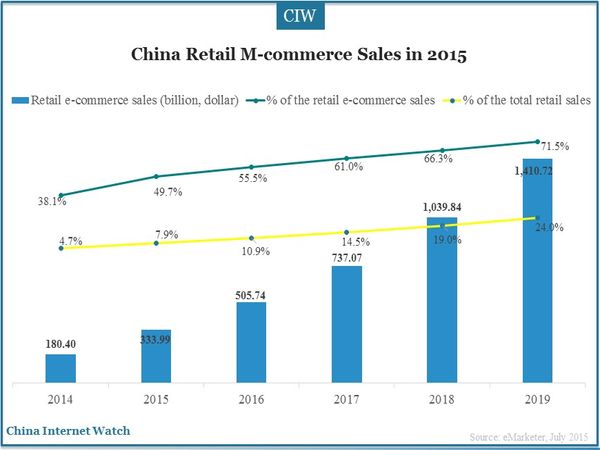
China Cross-border e-business in China is estimated to reach 6.5 trillion yuan (US$1.02 trillion) in 2016, with an increase of 30% growth rate and 20% in the ratio of China’s total import and export trade according to China Ministry of Commerce. In the first half of 2015, the e-commerce transactions totaled 7.64 trillion yuan (US$1.20 trillion), up 30.4% year-over-year. The cross-border e-business market will reach 2 trillion yuan (US$0.31 trillion), with an increase of 42.8%, accounting for 17.3% of Chinese import and export business market.
China currently has more than 5000 cross-border e-commerce platforms and over 200,000 enterprises conducting such businesses. E-commerce has become the most active force of China’s import and export trade.
In recent years, cross-border e-commerce in China has also become a new growth force of China’s foreign trading. A series of measures have been issued by the Chinese government to contribute to the development of cross-border e-commerce. The total import and export trade of China was 26.43 trillion yuan (US$4.16 trillion) in 2014, in which cross-border e-commerce reached 3.75 trillion yuan (US$0.59 trillion).
Although China’s online shoppers purchased most frequently from the United States, Australia was the top country of cross-border online shopping by average single transaction value, followed by France and the UK.
Read more: China Annual Cross-border Consumption in 2015
With the slowing down of the international economy, China’s import and export trading growth rate continues to decrease. However, China’s government publishes policies to promote online business, forexample “internet +”, so that cross-border e-commerce performs well this year. The online export trading achieves 80% of the total cross-border online trading. 12% of cross-border online shopping in China came from Shanghai.
After several years of ups and downs, China cross-border e-commerce chain is gradually improving, and a stable structure comes into being. Subdivision markets for e-business set on track and usher in rapid development period, especially overseas online shopping market. The market size of overseas shopping is expected to reach US$86 billion, accounting for 7% of online shopping and with annual growth rate of 48%.
Read more: http://www.chinainternetwatch.com/15110/cross-border-e-busines-1-02-trillion-2016/#ixzz3rglUIV7q



